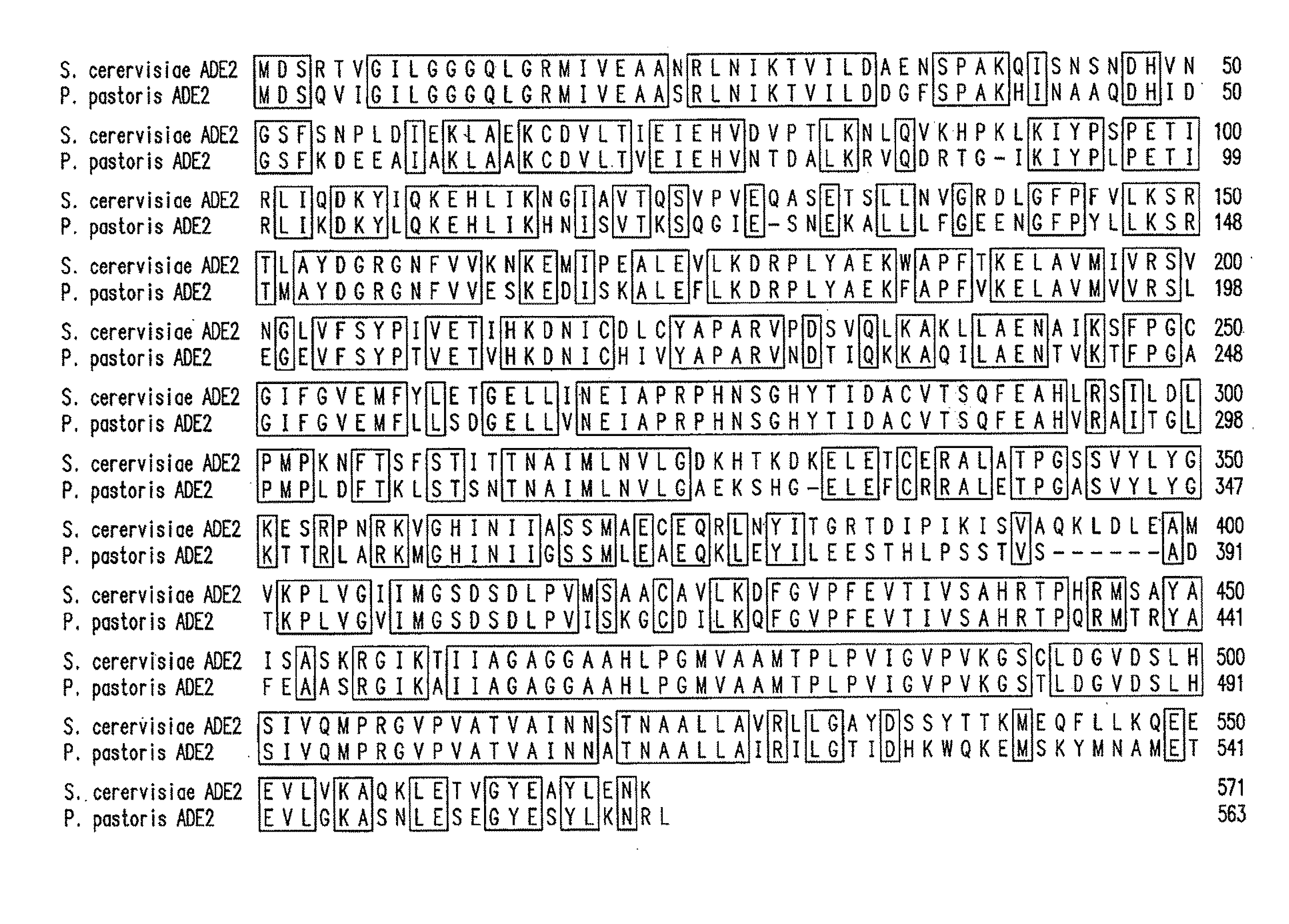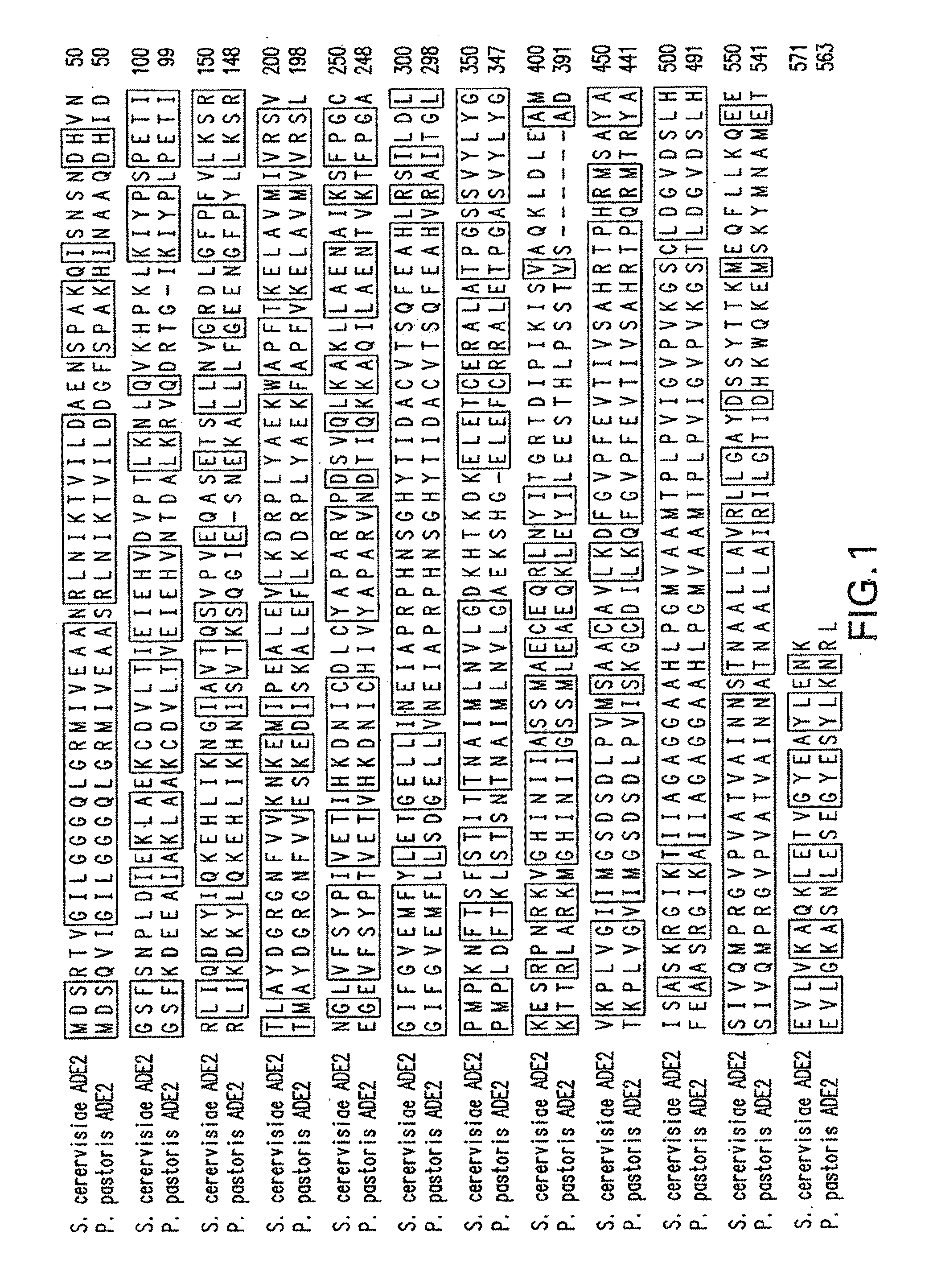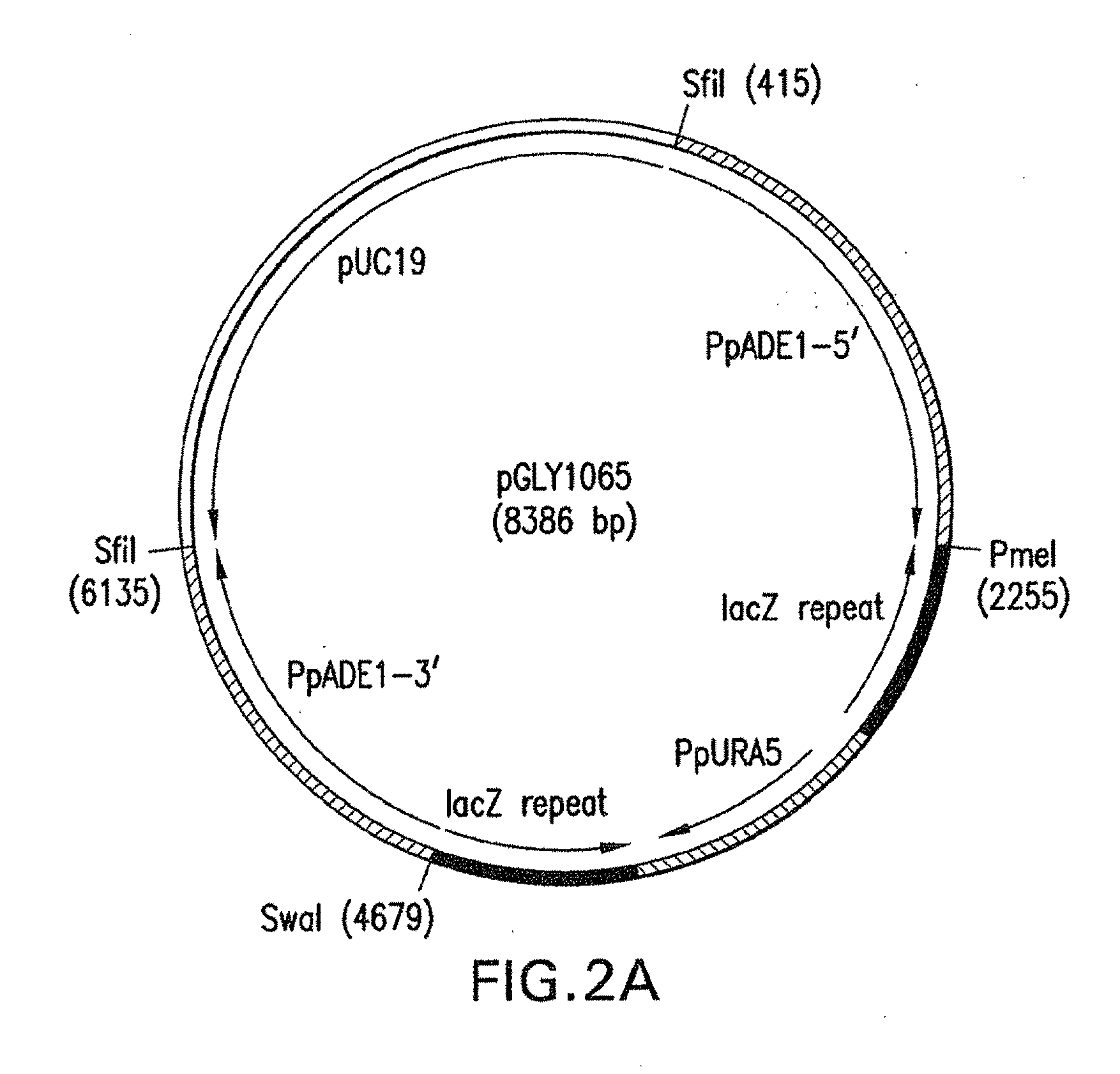Yeast strains for protein production
a technology of protein production and yeast, applied in the field of molecular biology, can solve the problem of multiple integrated copies collapse back, and achieve the effect of slow growth and low transcriptional activity
- Summary
- Abstract
- Description
- Claims
- Application Information
AI Technical Summary
Benefits of technology
Problems solved by technology
Method used
Image
Examples
example 1
[0072]Cloning of Pichia pastoris ADE1 and ADE2 genes was performed as follows.
[0073]The cloning of the P. pastoris ADE1 gene has been published before (Cereghino et al., supra). Additional 5′- and 3′-sequence was obtained using a partial P. pastoris genomic sequence obtained from Integrated Genomics, Chicago, Ill. The nucleotide sequence of the P. pastoris ADE1 open reading frame (ORF), including promoter and transcription termination sequences, is shown in SEQ ID NO: 56. The amino acid sequence of the P. pastoris ADE1 is shown in SEQ ID NO:57. Querying the same genomic sequence with the S. cerevisiae ADE2 ORF, the P. pastoris ADE2 homologue (563 amino acids with 69% identity) was identified using the program BLAST (Altschul et al., J. Mol. Biol. 215: 403-410 (1990)). The nucleotide sequence encoding the P. pastoris ADE2 ORF, including promoter and transcription termination sequences, is shown in SEQ ID NO:60. The ADE2 ORF is encoded by nucleotides 127 to 1,815 of the nucleotide seq...
example 2
[0074]Construction of ADE1 and ADE2 Knock-out vectors and strains was as follows. In the first step of plasmid construction, we created a universal knock-out plasmid containing DNA regions of: (a) the ARG3 gene of P. pastoris (Nett et al. 2005, supra) as space holders for the 5′ and 3′ regions of the gene to be knocked out; (b) the P. pastoris URA5-blaster (Nett and Gerngross, Yeast 20: 1279-1290 (2003) as auxotrophic marker; and (c) an expression cassette with a multiple cloning site for insertion of a foreign gene.
[0075]To create a URA5-blaster cassette compatible with the architecture of the universal knock-out plasmid the SacI-PvuII fragment of lacZ was cloned into the SacI-SmaI sites of pUC19. The resulting plasmid was digested with HindIII and the SacI-PvuII fragment of lacZ that had been blunt-ended using T4DNA polymerase was inserted into this plasmid in a head to tail orientation to yield pGLY8. A 1.0 kb DNA fragment of the P. pastoris URA5 gene was amplified using primers ...
example 3
[0082]Construction of ADE1 and ADE2 Marked Integration Vectors was as follows.
[0083]A vector with a more suitable multiple cloning site containing sites for BglII, EcoRI, KpnI, SwaI, BamHI, NotI, Pad, AscI and SfiI was constructed by cutting pUC19 with EcoRI and HindIII and inserting annealed oligos EXMCS1 (SEQ ID NO:27) and EXMCS2 (SEQ ID NO:28), creating pGLY192. A 0.3 kb DNA fragment containing the S. cerevisiae CYC1 transcriptional terminator region that had been amplified using primers CYCTT5 (SEQ ID NO:29) and CYCTT3 (SEQ ID NO:30) and S. cerevisiae genomic DNA as template was cut with BamHI and SwaI and cloned into pGLY192 yielding pGLY213. Then the P. pastoris AOX1 promoter was amplified from genomic DNA using oligos AOX1P-5 (SEQ ID NO:31) and AOX1P-3 (SEQ ID NO:32), cut with BglII and EcoRI and ligated into pGLY213 to create pGLY214. Since both ade knock-out plasmids had been designed to remove the complete ORF, a region for integration of the plasmid as an alternative to t...
PUM
| Property | Measurement | Unit |
|---|---|---|
| nucleic acid | aaaaa | aaaaa |
| resistance | aaaaa | aaaaa |
| Δ | aaaaa | aaaaa |
Abstract
Description
Claims
Application Information
 Login to View More
Login to View More - R&D
- Intellectual Property
- Life Sciences
- Materials
- Tech Scout
- Unparalleled Data Quality
- Higher Quality Content
- 60% Fewer Hallucinations
Browse by: Latest US Patents, China's latest patents, Technical Efficacy Thesaurus, Application Domain, Technology Topic, Popular Technical Reports.
© 2025 PatSnap. All rights reserved.Legal|Privacy policy|Modern Slavery Act Transparency Statement|Sitemap|About US| Contact US: help@patsnap.com



